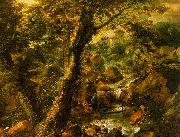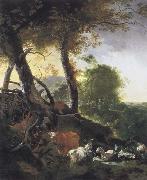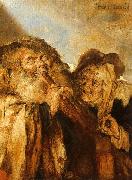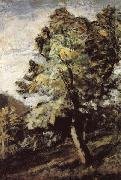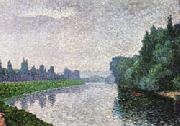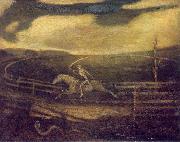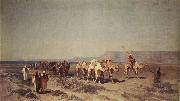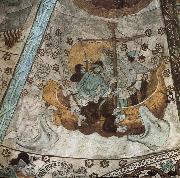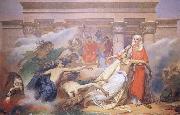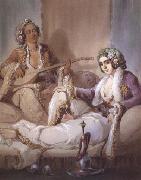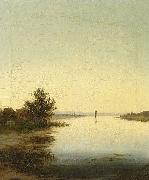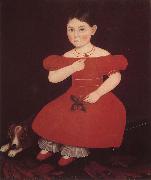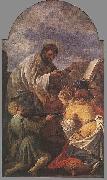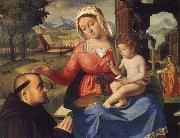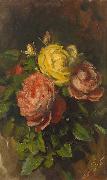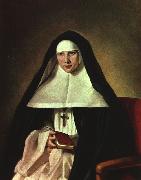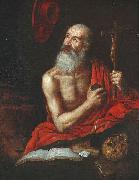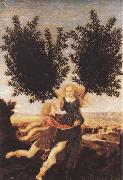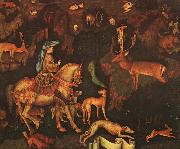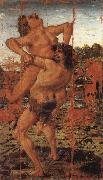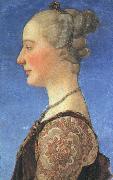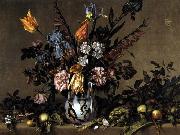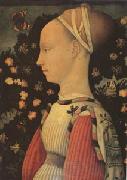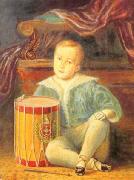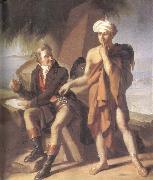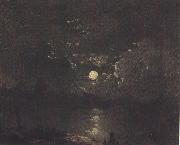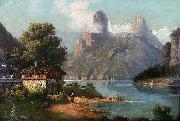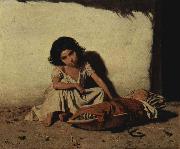|
|
|
|
|
|
|
|
|
|
|
|
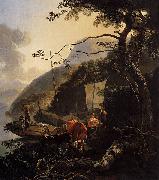 |
Adam Pijnacker
|
|
15 February 1622, Schiedam - buried 28 March 1673, Amsterdam ) was a Dutch Golden Age painter, mostly of landscapes.
Pynacker was the son of a wine merchant, who was a member of the vroedschap, or city regency. He travelled to Italy and was gone for three years. In 1658 he converted to Catholicism in order to marry Eva Maria de Geest, Wybrand de Geest's daughter. In that year his portrait was painted by his father-in-law. In Schiedam he baptized two children, but from 1661 until he died, he lived on the Rozengracht in Amsterdam.
|
|
|
|
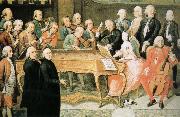 |
adelaide a procter
|
|
an English poet, was the eldest daughter of the poet Bryan Procter.
In 1851, Procter became a Roman Catholic. She took much interest in social questions affecting women. She wrote the well-known songs Cleansing Fires and The Lost Chord, and among her many hymns are I do not ask, O Lord, that Life may be, and My God, I thank Thee who hast made.
|
|
|
|
 |
After Peter Paul Rubens
|
|
Sir Peter Paul Rubens (Dutch pronunciation: [ˈrybə(n)s]; 28 June 1577 - 30 May 1640), was a Flemish Baroque painter, and a proponent of an extravagant Baroque style that emphasised movement, colour, and sensuality. He is well-known for his Counter-Reformation altarpieces, portraits, landscapes, and history paintings of mythological and allegorical subjects.
In addition to running a large studio in Antwerp that produced paintings popular with nobility and art collectors throughout Europe, Rubens was a classically educated humanist scholar, art collector, and diplomat who was knighted by both Philip IV, King of Spain, and Charles I, King of England.
|
|
|
|
|
|
|
|
|
|
|
|
|
|
|
|
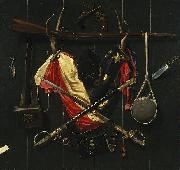 |
Alexander Pope
|
|
(21 May 1688 - 30 May 1744) was an eighteenth-century English poet, best known for his satirical verse and for his translation of Homer. He is the third most frequently quoted writer in The Oxford Dictionary of Quotations, after Shakespeare and Tennyson. Pope is famous for his use of the heroic couplet.
Pope was born to Edith Pope (1643-1733) and Alexander Pope Senior. (1646-1717) a linen merchant of Plough Court, Lombard Street, London, who were both Catholics. Pope's education was affected by the penal law in force at the time upholding the status of the established Church of England, which banned Catholics from teaching, attending a university, voting, or holding public office on pain of perpetual imprisonment. Pope was taught to read by his aunt, then went to Twyford School in about 1698-9. He then went to two Catholic schools in London. Such schools, while illegal, were tolerated in some areas.
In 1700, his family moved to a small estate at Popeswood in Binfield, Berkshire, close to the royal Windsor Forest. This was due to strong anti-Catholic sentiment and a statute preventing Catholics from living within 10 miles (16 km) of either London or Westminster. Pope would later describe the countryside around the house in his poem Windsor Forest. Pope's formal education ended at this time, and from then on he mostly educated himself by reading the works of classical writers such as the satirists Horace and Juvenal, the epic poets Homer and Virgil, as well as English authors such as Geoffrey Chaucer, William Shakespeare and John Dryden. He also studied many languages and read works by English, French, Italian, Latin, and Greek poets. After five years of study, Pope came into contact with figures from the London literary society such as William Wycherley, William Congreve, Samuel Garth, William Trumbull, and William Walsh.
At Binfield, he also began to make many important friends. One of them, John Caryll (the future dedicatee of The Rape of the Lock), was twenty years older than the poet and had made many acquaintances in the London literary world. He introduced the young Pope to the aging playwright William Wycherley and to William Walsh, a minor poet, who helped Pope revise his first major work, The Pastorals. He also met the Blount sisters, Teresa and (his alleged future lover) Martha, both of whom would remain lifelong friends.
From the age of 12, he suffered numerous health problems, such as Pott's disease (a form of tuberculosis that affects the bone) which deformed his body and stunted his growth, leaving him with a severe hunchback. His tuberculosis infection caused other health problems including respiratory difficulties, high fevers, inflamed eyes, and abdominal pain. He never grew beyond 1.37 m (4 ft 6 in) tall. Pope was already removed from society because he was Catholic; his poor health only alienated him further. Although he never married, he had many female friends to whom he wrote witty letters. He did have one alleged lover, |
|
|
|
|
|
|
|
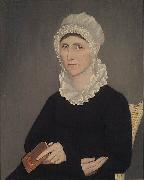 |
Ammi Phillips
|
|
(1788-1865), a self-taught New England portrait painter, is regarded as one of the most important folk artists of his era.
Phillips was born in Colebrook, Connecticut, and began painting portraits as early as 1810. He worked as an itinerant painter in Connecticut, Massachusetts, and New York for five decades.
In 1924, a group of portraits of women, shown leaning forward in three-quarter view and wearing dark dresses, were displayed in an antique show in Kent, Connecticut. The anonymous painter of these strongly colored works, which dated from the 1830s, became known as the "Kent Limner," after the locality where they had come to light.
Stylistically distinct from those of the "Kent Limner," a second group of early-19th-century paintings emerged after 1940 in the area near the Connecticut - New York border. Attributed at the time to an unknown "Border Limner," these works, dating from the period 1812 - 1818, were characterized by soft pastel hues, as seen in the portrait of Harriet Leavens, now in the Fogg Art Museum, Harvard University.
It was not until 1968 that Ammi Phillips's identity as the painter of both groups of portraits was established. Additional works were identified, showing the artist's transition from the delicate coloration of the Border period to the bold and somber works that followed. |
|
|
|
|
|
|
|
|
|
|
|
|
|
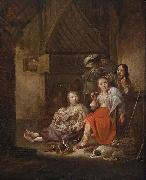 |
Anthonie Palamedesz
|
|
, also Anthonie or Antonie Palamedesz., (1601, Delft - ca 27 November 1673, Amsterdam), was a Dutch Golden Age portrait painter.
According to Houbraken his father was a Flemish sculptor who carved semi-precious stone such as Jasper, Porphyry, and Agate into vases and other decorative art. His father had traveled to England in service of King James of Scotland, but after Anthonie's older brother Palamedes was born, the family returned to Delft where the boys grew up. Anthonie survived his brother Palamedes who died young in 1638. He entered the Delft Guild of St. Luke in 1636 and was in 1673 hoofdman or deacon of that guild for the last time.
Palamedes primarily painted portraits and genre works, while his brother Palamedes Palamedesz. I was a battle scene painter. According to the RKD, Anthonie was the oldest brother, taught by Michiel Jansz. van Mierevelt and Hans Jordaens and had joined the Delft Guild of Saint Luke already in 1621. He was married twice, and had four children in total. His pupils were his younger brother Palamedes, his own son Palamedes II, and the painter Ludolf de Jongh. Anthonie died in Amsterdam in 1673.
|
|
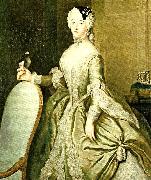 |
antoine pesne
|
|
Antoine Pesne, född 23 maj 1683 i Paris, Frankrike, död 5 augusti 1757 i Berlin, Preussen, var en fransk målare under rokokon.
Pesne gick i lära hos sin far, målaren Thomas Pesne, samt hos Charles de la Fosse i Paris. Under åren 1705?C1710 företog han en resa i Italien och vistades huvudsakligen i Venedig, där han anslöt sig till Andrea Celesti, vars måleri tydligt påverkade Pesnes tidiga verk.
1710 kallades han av kung Fredrik I av Preussen till Berlin som hovmålare. Därefter företog han under de följande åren kortare resor till hoven i Dessau (1715), Dresden (1718), London (1723) och Paris (1724). 1733 utnämndes Pesne till ledare för konstakademin i Berlin. Han anses vara en viktig förmedlare av den franska konsten till Brandenburg-Preussen. Pesne var i huvudsak verksam som porträttmålare, men han utförde även talrika vägg- och takmålningar för Fredrik den store i de kungliga slotten.
Ett av Pesnes mest berömda konstverk är Dansösen Barbara Campanini (cirka 1745). Detta porträtt med sin lätta och schvungfulla formgivning, det spontana penseldraget och de ljusa, pastelliknande färgerna är karakteristiskt för Pesnes arbeten och för rokokon i allmänhet. På ett virtuost sätt framställer Pesne den med tygblommor dekorerade sidenklänningen. Fredrik den store uppskattade sin hovmålares berömda plein-air-porträtt och lät hänga det på en framträdande plats i sitt arbetsrum i slottet i Berlin.
|
|
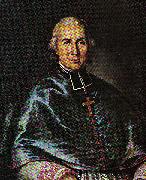 |
Antoine Plamondon
|
|
(ca. 1804-1895) was a Canadian artist who painted mainly portraits and religious images in 19th-century Quebec.
Plamondon was born in 1804 (or 1802) at L'Ancienne-Lorette, Quebec, the son of the village grocer. He went to school in Saint-Roch, a suburb of Quebec City, after which he was apprenticed to Joseph Legare (1795-1855), a picture restorer and amateur painter. In 1826 Plamondon travelled to Paris where he studied with classical portraitists such as Paulin Guerin (1783-1855). Works from this period are scarce.
In 1830, after the Louis-Philippe uprisings, Plamondon returned to Quebec. While his portraits were of living subjects, many of his religious paintings (commissioned by various churches and religious orders around Quebec City) were based on engravings of old masters. His portrait work was notable for his full-face, close-up, and tightly comosed style as well as a concentration on the latest style of clothing. His later portraits showed more roundness in the modelling and far more space in the composition.
By 1850 Plamondon had moved to the country at Neuville, with his mother, a brother, and a sister, where he lived until the 1890s. Much of his work during this period were religious paintings, copies of old masters, done for local churches.
Plamondon never married. He was a lifelong monarchist and supporter of the Conservative Party, a friend of Sir George-Étienne Cartier and Sir Étienne Tache, but broke with the Conservatives over the execution of Louis Riel. His 1882 self-portrait was probably his last work He died in Neuville in 1895.
|
|
|
|
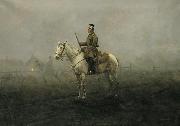 |
Antoni Piotrowski
|
|
(Bulgarian: Antoni Pyotrovski; 1853-1924) was a Polish Romanticist and Realist painter.
Piotrowski was born in Nietulisko Duże in 1853 near Kunew, then in the Russian Empire (today in Poland), to a sheet iron worker. From 1869 on, Piotrowski studied painting with professor Wojciech Gerson. From 1875 to 1877 he was tutored in Munich by Wilhelm Lindenschmit the Younger and from 1877 to 1879 his teacher was Jan Matejko of the Academy of Fine Arts in Krakew.
In 1879, Piotrowski arrived to the newly-liberated Principality of Bulgaria as a correspondent of the British issues The Graphic and The Illustrated London News and the French Illustration and Le Monde Illustre. He moved to Paris only to return to Bulgaria in 1885 to join the Serbo-Bulgarian War as a Bulgarian volunteer. For his merits during the fighting he was honoured with an Order of Bravery.
During his time in the Bulgarian Army Piotrowski painted the Battle of Slivnitsa, the storming of Tsaribrod and the Bulgarian entry in Pirot. All his nine military works were purchased by the Bulgarian state and are exhibited in the National Museum of Military History in Sofia. He also published graphics from the war in various Western European illustrated issues. Among his works were also portraits of Bulgarian princes (knyaze) Alexander of Battenberg and Ferdinand of Saxe-Coburg-Gotha; Piotrowski was awarded an Order of Civil Merit by the latter.
Piotrowski returned to Bulgaria in 1889: he visited Batak and painted his epic canvas The Batak Massacre. This painting of his won an award at the Plovdiv Fair in 1892. In 1900 Piotrowski returned to Poland and settled in Warsaw. |
|
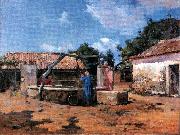 |
Antonio Carvalho de Silva Porto
|
|
(Porto, 11 November 1850 - Porto, 11 June 1893) was a Portuguese naturalist painter.
Born in Porto, he studied there under João Antenio Correia and T. Furtado, then continued his studies in Paris and Rome.
While in Paris he exhibited his work in the Salon and in the World´s Fair of 1878. In Paris, he studied with his friend João Marques de Oliveira, where they were pupils of Adolphe Yvon and Alexandre Cabanel. They became followers of the naturalist Barbizon School, and brought the new school of painting to Portugal, when they returned in 1879.
Silva Porto become one of the most acclaimed naturalist painters of his generation, showing the heritage of Jean-Baptiste Camille Corot and Charles-François Daubigny. Secondary effects from impressionism can sometimes be found in his paintings.
|
|
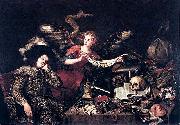 |
Antonio de Pereda
|
|
(ca. 1611-1678) was a Spanish Baroque-era painter , best known for his still lifes. Pereda was born in Valladolid. He was the eldest of three brothers from an artistic family. His father, mother and two brothers were all painters. He was educated in Madrid by Pedro de las Cuevas and was taken under the protective wing of the influential Giovanni Battista Crescenzi.After Crescenzi's death in 1635, Pereda was expelled from the court and began to take commissions from religious institutions. As well as still lifes and religious paintings, Pereda was known for his historical paintings such as the Relief of Genoa (1635) which was painted for the Buen Retiro Palace in Madrid as part of the same series as Velezquez's Surrender of Breda.
|
|
|
|
|
|
 |
Antonio Parreiras
|
|
(1860 - 1937) was a Brazilian painter. Although much of his work was made up of historical and nude paintings, he expressed himself best in his landscapes, which combined European influences with those of his native Brazil.
In 1883, Parreiras met German painter George Grimm, who taught landscape, flora and wildlife painting, while studying at Brazil's Fine Arts Imperial Academy. Grimm influenced Parreiras to move away from academic traditions of painting in favor of the direct observation of nature, free brushstrokes and luminosity.
Parreiras traveled throughout Europe for a number of years, visiting many countries including Germany, Italy, and France, exhibiting his first female nude at the Salon in Paris in 1907. He continued to visit Europe after permanently returning to Brazil in 1914, and in 1929 received a gold medal in the Exposition International in Seville.
Parreiras also founded the Plein Air School in Niterei, Brazil, and a museum holding many of his works, the Museum Antônio Parreiras, is also in Niterei.
|
|
|
|
|
|
|
|
|
|
|
|
|
|
|
|
|
|
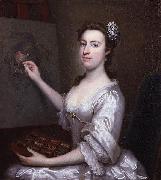 |
Arthur Pond
|
|
Arthur Pond (1705?-1758) was an English painter and engraver.
Born about 1705, was educated in London, and stayed for a time in Rome studying art, in company with the sculptor Roubiliac. He became a successful portrait-painter.
He was elected a Fellow of the Royal Society in 1752, and died in Great Queen Street, Lincoln's Inn Fields, 9 September 1758.
His numerous original portraits include Alexander Pope, William, Duke of Cumberland, and Peg Woffington. Pond was also a prolific etcher, and used various mixed processes of engraving by means of which he imitated or reproduced the works of masters such as Rembrandt, Raphael, Salvator Rosa, Parmigiano, Caravaggio, and the Poussins.
In 1734-5 he published a series of his plates under the title Imitations of the Italian Masters. He also collaborated with George Knapton in the publication of the Heads of Illustrious Persons, after Jacobus Houbraken and George Vertue, with lives by Thomas Birch (London, 1743-52); and engraved sixty-eight plates for a collection of ninety-five reproductions from drawings by famous masters, in which Knapton was again his colleague. Another of his productions was a series of twenty-five caricatures after Pier Leone Ghezzi, republished in 1823 and 1832 as Eccentric Characters.
|
|
|
|
|
|
|
|
|









